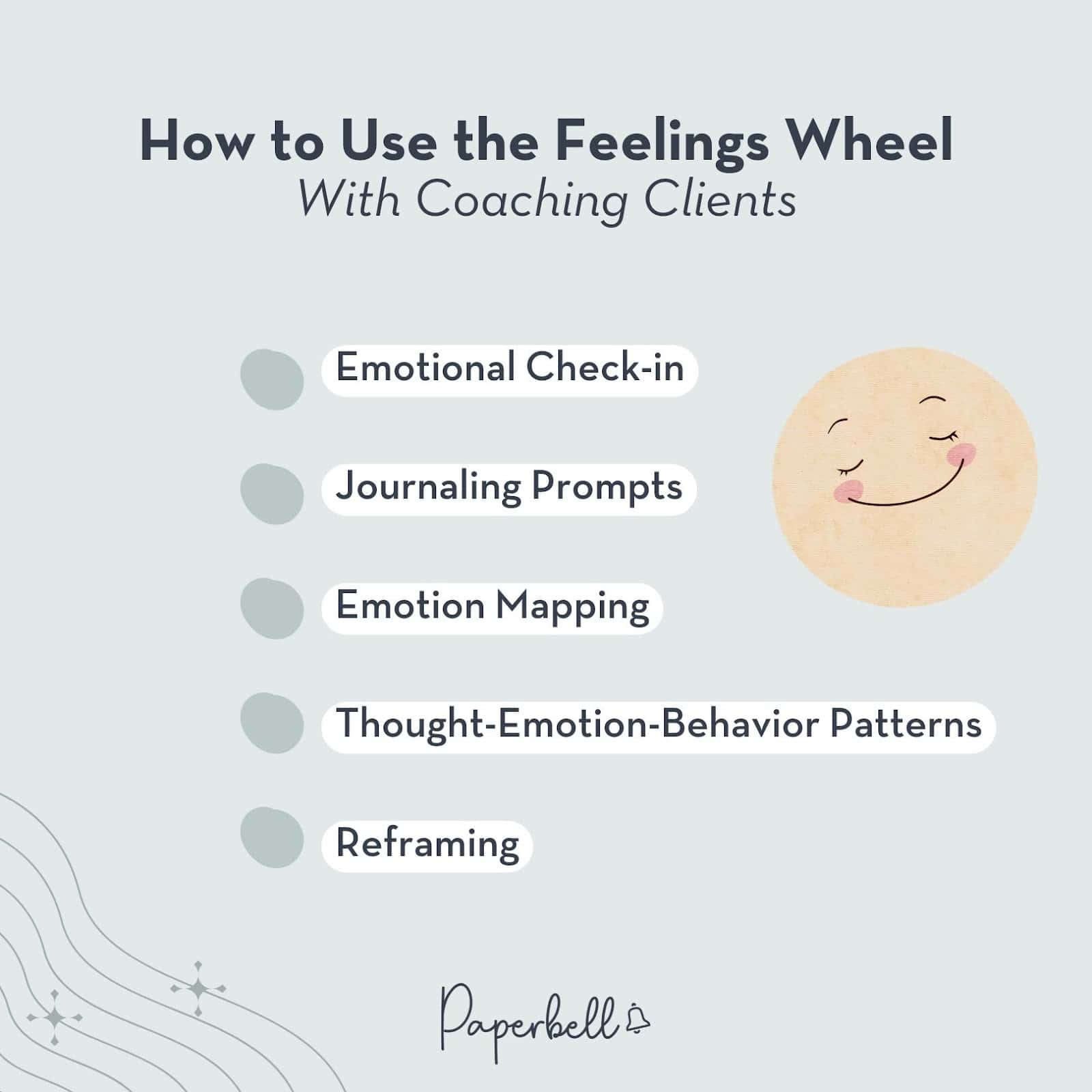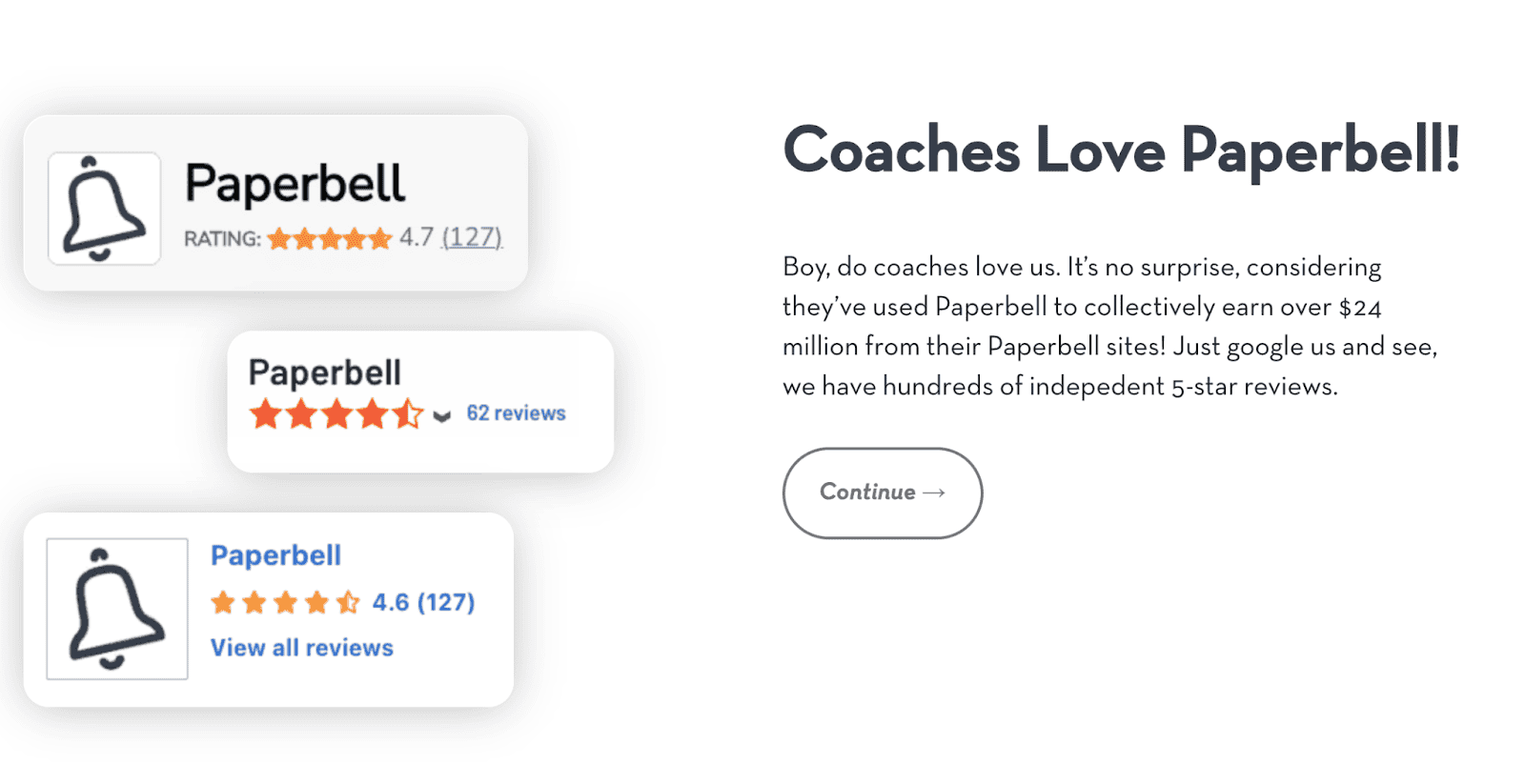Emotions are at the core of every coaching conversation. Whether a client is facing a new scary challenge at work or relationship struggles, their feelings influence how they perceive and respond to these experiences.
However, many clients struggle to articulate their feelings beyond basic labels like “happy” or “stressed.” That’s when the Feelings Wheel can be helpful.
It’s a powerful coaching tool that gives clients emotional literacy and helps them develop deeper self-awareness about complex and layered emotions. By integrating this framework into your sessions, you can facilitate more transformative conversations and equip clients with the skills to navigate their feelings.
What Is the Feelings Wheel?
The most well-known framework for emotional reflection is the Wheel of Emotions or the Feelings Wheel, originally developed by psychologist Robert Plutchik in 1980.
Plutchik’s version consists of eight primary emotions, which are arranged in opposite pairs:
- Joy vs. Sadness
- Trust vs. Disgust
- Fear vs. Anger
- Surprise vs. Anticipation
Robert Plutchik’s Feelings Wheel, Source: Psych Central
These primary feelings are depicted in the central layer of the wheel. The three levels of intensity show how each emotion can range from a mild feeling to a more intense version of that emotion. For example, the primary emotion of “joy” can escalate to “ecstasy” or subside to “serenity.”
Plutchik also noted that feelings can combine to form new, more complex emotions, such as love (a blend of joy and trust) or remorse (a combination of disgust and sadness).
Willcox’s Feelings Wheel: A More Nuanced Approach
Therapist Gloria Willcox expanded Plutchik’s original model in the 1980s to create a more nuanced way of labeling and categorizing emotions.
She identified six primary emotions (sad, mad, scared, joyful, powerful, and peaceful) in the center and added a wider range of secondary and tertiary emotions. These outer layers focus less on intensity and more on the specificity of those feelings.
Gloria Willcox’s Feelings Wheel, source: Gottman Institute
In addition to a more layered emotional taxonomy, Willcox’s version also balances negative emotions with positive ones. It moves beyond generic emotional labels and pinpoints precise secondary feelings that allow for more productive discussions in coaching and therapy sessions.
The Feelings Wheel today has many different versions and interpretations, each building on the core idea of this model with an extended emotional vocabulary.
A More Extensive Version of the Feelings Wheel, source: Calm
These versions may have different wording for basic emotions and more detailed layers of secondary emotions.
Why Use the Feelings Wheel in Coaching?
Here’s how incorporating the Feelings Wheel into your coaching toolbox can benefit your clients.
Expanding Emotional Vocabulary
When you ask clients how an experience made them feel, they might give generic answers like “happy” or “stressed.” Chances are, there’s more to their emotions below the surface, often a mix of multiple feelings present at once.
For example, let’s say they’ve just moved to a new city for an exciting job opportunity. They may feel proud and inspired, but also lonely and uncertain. They may simultaneously feel anticipation for a new start and nostalgia for the place they have left behind.
Instead of labeling their experience as “good” or “bad,” emotional literacy tools help them recognize the blend of feelings present in them. This understanding allows for deeper insights and better emotional regulation.
Reframing “Negative” Emotions as Growth Opportunities
Emotions are often labelled as positive or negative with an underlying assumption that we should always strive to feel good and avoid so-called negative feelings.
But emotions aren’t obstacles to be eliminated; they’re vital information pointing us to our intended path of evolution. They tell us what matters, what we need, and what we should pay attention to.
For example, frustration might signal that the client cares deeply about something and needs to adjust their approach. Grief is a reflection of love and loss. Anger, when acknowledged rather than suppressed, can be a catalyst for setting boundaries or advocating for change.
Some clients may need to unlearn toxic positivity, the pressure to ignore or downplay their hardships. They need to recognize that suppressing difficult feelings doesn’t make them go away; it amplifies them.
The Feelings Wheel can show them that all emotions are part of the human experience and encourage them to interact with these dormant parts of themselves.
5 Coaching Exercises to Put the Feelings Wheel Into Action
Here are five ways you can use the Feelings Wheel with coaching clients.
1. Emotional Check-in
You can use the emotion wheel as a quick check-in exercise at the beginning of sessions to help clients recognize and articulate their emotions. This is great for both building rapport and tailoring the session to the headspace they’re in.
- Ask the client to scan the Feelings Wheel and choose 1-3 emotions they are currently experiencing.
- Discuss what triggered these emotions, exploring both external and internal factors.
- Reflect on the meaning they assign to these feelings.
If your client finds it difficult to describe how they are feeling, you can guide them through a brief body-scan exercise. This allows them to notice physical sensations, like tension or warmth, and use the wheel to identify related emotions.
2. Journaling Prompts
You can assign the Feelings Wheel to your client as a workbook or journaling exercise. Ask them to write about a recent experience and use the wheel to describe their emotions. Alternatively, they can track their emotions throughout the week and note down their triggers and responses.
Some questions that may help here are:
- What emotions dominated my week, and why?
- How did my emotions influence my decisions?
- What patterns do I notice in my emotional experiences?
3. Emotion Mapping
Expanding the client’s emotional vocabulary helps them describe their internal experience in a more nuanced way.
- Start with a broad core emotion from the emotion wheel, like anger or sadness.
- Move outward on the wheel, discussing how more specific emotions resonate with their experience. For example, does their anger stem from frustration or resentment?
- Reflect on how using precise emotional language changes their perspective.
This exercise helps clients move beyond vague descriptions, like “I’m just stressed,” to more specific emotions, such as “I feel deflated and helpless.”
4. Thought-Emotion-Behavior Patterns
Connecting feelings to thoughts and behaviors allows your client to pinpoint their emotional triggers and behavior patterns.
- Ask the client to select an emotion from the Feelings Wheel.
- Explore the thoughts that led to this feeling. A coaching question here can be: “If you could give a voice to this feeling, what would it say?”
- Discuss how the emotion influenced their behavior and decisions.
- Reflect on any patterns that emerge and whether these responses are serving them.
By recognizing these connections, clients can recognize situations in their everyday lives that call for better emotional regulation.
5. Reframing
Show clients how to reframe difficult emotions in a way that serves them better.
- Ask the client to identify a challenging emotion from the wheel.
- Discuss its impact: How does this emotion shape their current mindset and actions?
- Explore alternative interpretations. How could this emotion be seen in a different light?
- Encourage a growth-oriented perspective, such as shifting from agitated to motivated or from uncertain to curious.
You may then help them articulate the meanings they attach to their experience. For example, a client who feels rejected after a failed job interview might reframe it as an opportunity to refine their skills and seek a better fit.

Adapting the Feelings Wheel for Different Clients
Different clients may respond differently to the emotion wheel. Here’s how you can adapt it for them.
Analytical Clients
For clients who respond better to logic, frame emotions as data points that influence their decisions. Encourage them to analyze patterns in their emotional responses and how these impact their actions.
A body scan exercise can help them get out of their head and reconnect with their physical reality. They might also benefit from activities that bring them back into their body, such as nature walks or yoga.
Emotionally Reserved Clients
Some clients may struggle to express their emotions openly. The Feeling Wheel can provide a gentle approach to open up a discussion about it.
Create a non-judgmental, safe space for them where they have permission to get vulnerable and feel accepted. Start with broad categories on the Feelings Wheel and gradually move toward more specific emotions.
It may also help to assign the wheel to them as a homework exercise first before unfolding their reflections in a session. Make sure you address the underlying feeling, such as fear or shame, that blocks them from dealing with emotions.
Clients Under High-Stress
When working with clients under significant stress, the emotion wheel can help break down complex emotional experiences into more manageable impressions.
Guide them in identifying and processing emotions step by step to reduce feeling overwhelmed. Encourage them to practice using the wheel in situations that trigger their stress in between sessions and as a conflict-resolution tool in difficult relationships.
Remember to refer them to a mental health professional if their anxiety persists, or if they show signs of depression.
FAQ
How Do You Introduce the Feelings Wheel to Clients?
You can introduce the Feelings Wheel in your sessions as a tool designed to help identify and understand emotions. Clients can use it as a map to pinpoint specific feelings and explore where they come from.
If they don’t see an emotion on the wheel that fully represents their feelings, encourage them to describe it in their own words or find combinations of emotions on the wheel.
Which Version of the Feelings Wheel Is Best for Coaching?
Willcox’s Feelings Wheel and other interpretations of her model provide a more detailed framework for reflection in coaching sessions. It incorporates a wider vocabulary for both positive and negative feelings.
When to Use the Feelings Wheel?
Use the Feelings Wheel when clients are struggling to identify or articulate their emotions, during session check-ins, or to explore complex emotional responses to specific situations. It’s also useful for cultivating emotional intelligence and empathy.
Bringing It All Together
The Feelings Wheel gives clients the language to navigate emotional complexity and reframe negative emotions as sources of insight.
To maximize its impact, you may send them a digital copy of the wheel, a brief online assessment, and your session notes with their biggest insights.
Paperbell makes all of this easy. You can set up surveys and upload coaching materials for your packages to be automatically shared with clients enrolled. You can also upload them to the client portals of select coachees. You can decide whether you want to share your session notes with them or keep them private.

Beyond supercharging your coaching process, Paperbell also sets up your website and handles everything from bookings to contracts and payments. Try it for free to see how it can transform your practice.










